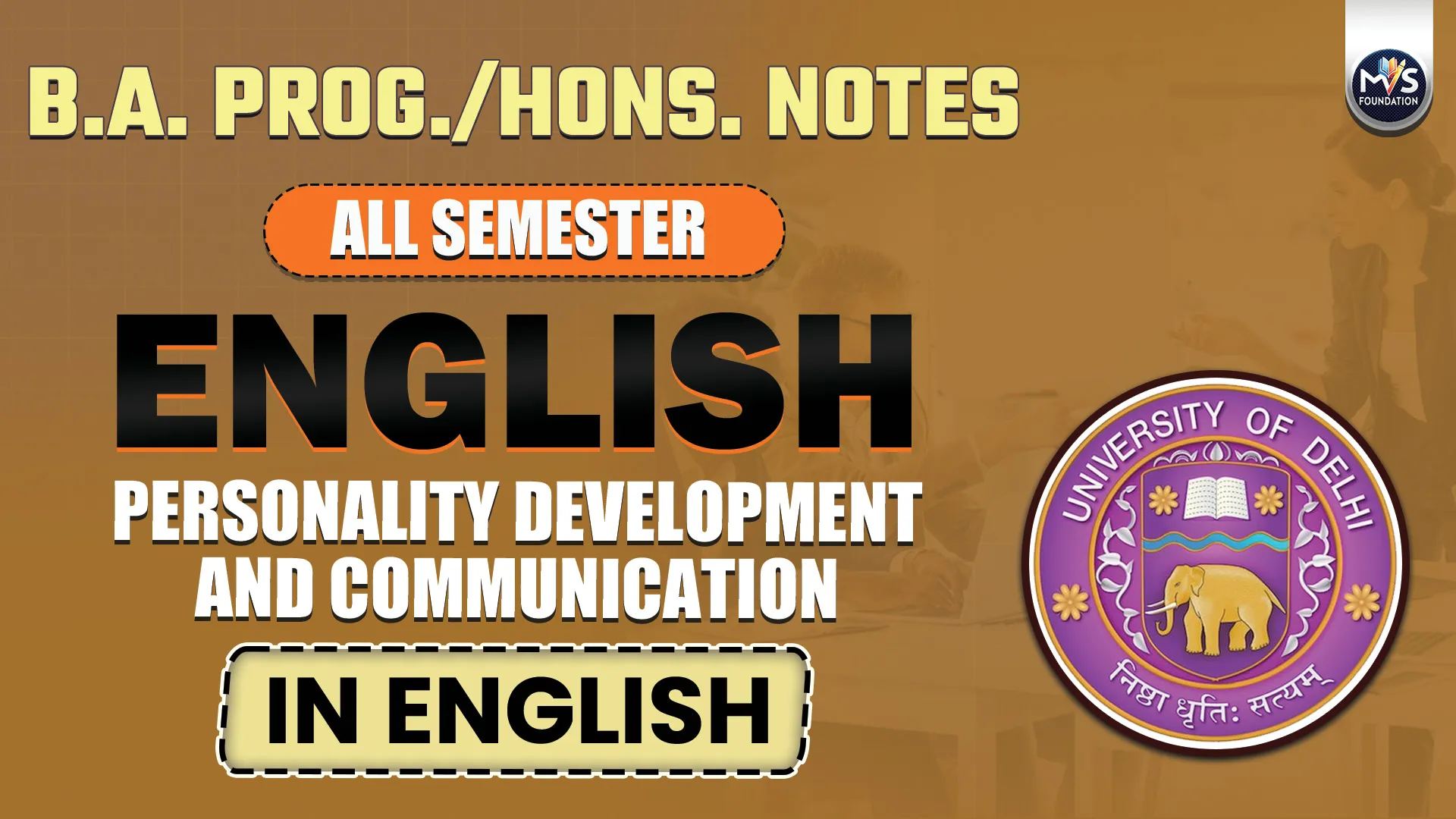
Get in Touch
We will get back to you within 24 hours.
Welcome to MVS Blog

Q1. Define the communication process. What is the importance of feedback in the communication process?
Answer-
Introduction
Definition of Communication by Different Thinkers:
Newman and Summer
According to I. Newman and Summer - "Communication is an exchange of facts, ideas, opinions, or emotions by two or more persons."
Dr. Keith Davis
According to Dr. Keith Davis "Communication is a process of passing information and understanding from one person to another."
John Adair
According to John Adair Communication is essentially the ability of one person to make contact with another and to make himself or herself understood or communication is the process by which meanings are exchanged between people through a common set of symbols."
The communication Process:
Communication is a continuous process that starts when the sender thinks of an idea. The sender then sends the message through a channel to the receiver. The receiver responds with feedback, such as a message or signal, within a set time. Thus, there are Seven major elements of communication process:
1. Ideation:
For instance, a manager in a company might have an idea about improving team productivity. Before communicating this idea, the manager needs to clearly outline what the improvement involves, the benefits it brings, and the steps required to achieve it. If the manager skips this planning stage, it can lead to confusion and misunderstandings when communicating the idea.
2. Sender:
The sender is the person who starts the communication by sending the message. It's important for the sender to think about things like their communication skills, viewpoint, knowledge, and social position when making the message.
For example, For example, when a manager gives instructions to employees about a new project, they need to make sure the message is clear and relevant to avoid confusion.
3. Encoding:
For instance, a teacher uses both spoken explanations and pictures to help students understand difficult ideas in different ways.
4. Message:
The message is the main content of communication, which includes what the sender wants to share, such as their ideas, thoughts, or information. It can be communicated through words (spoken or written) and through nonverbal ways, like gestures, body language, or tone of voice.
For instance, In a job interview, a candidate's message includes both their spoken answers and their body language, which show whether they are right for the job. The message should be clear and well-organized to make sure the interviewer understands the candidate's intention. If the message is unclear, it could cause misunderstandings, making it important to communicate well.
5. Channel/Medium
The channel or medium is the way through which the message travels from the sender to the receiver. Various channels can be used, such as written documents, face-to-face conversations, phone calls, or digital platforms like email or video conferencing.
For example, An employee might decide to send an email to inform their supervisor about the progress of a project, as email is good for detailed and written communication. The choice of channel depends on the nature of the message, the urgency, and the recipient's preferences.
6. Noise:
Noise refers to anything that disrupts or distorts a message while it's being shared. It can be external, like loud sounds during a phone call, or internal, like the listener's emotions or beliefs. Noise can also come from language differences, cultural misunderstandings, or environmental factors. It can make communication harder and cause confusion. To make sure the message is understood clearly, the sender needs to be aware of these distractions and try to reduce them.
For example, during a phone call, a weak signal might cause confusion, or using difficult words might make it hard for the other person to understand.
7. Decoding:
Decoding is when the receiver understands and makes sense of the message they get. It means turning the sender's message back into clear thoughts or information. Misunderstandings can happen if the sender's message and the receiver's understanding don't match. Good decoding is important so the receiver can correctly understand the message and respond properly.
For example, If someone says, "I'm feeling blue," and you think they are talking about the color, you might misunderstand. But if you know it's an expression meaning "I'm feeling sad," you can understand the message correctly. And Feedback is the last process of the Communication process.
Feedback
The importance of feedback in the communication process:
Conclusion
Effective communication is a systematic, multi-stage process that involves the ideation, encoding, transmission, decoding, and feedback of messages. Each stage plays a significant role in ensuring the message is conveyed and understood as intended. And Feedback, in particular, is a critical component that not only confirms the successful transmission and comprehension of the message but also facilitates continuous improvement and engagement in the communication process.
0 Response